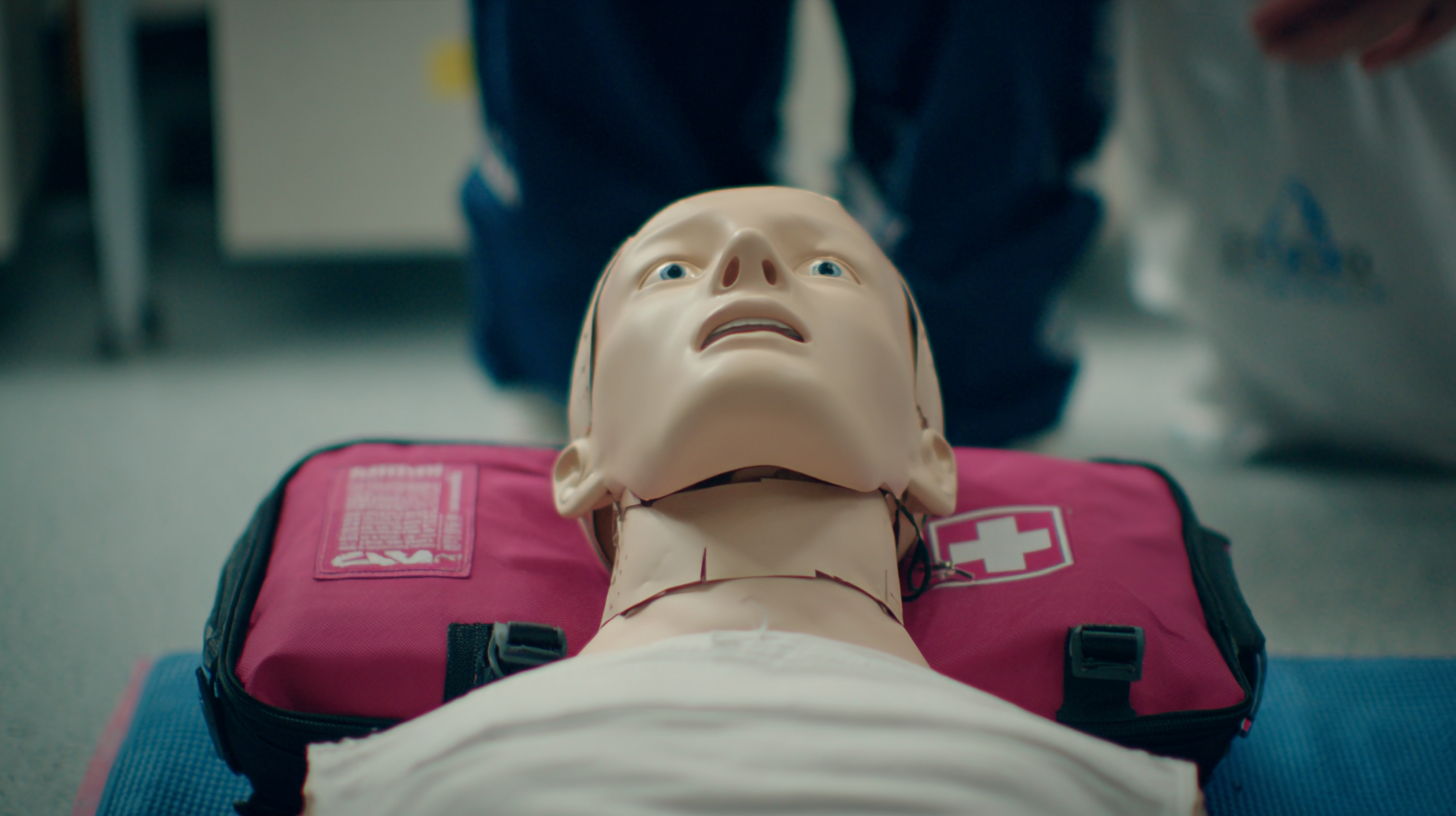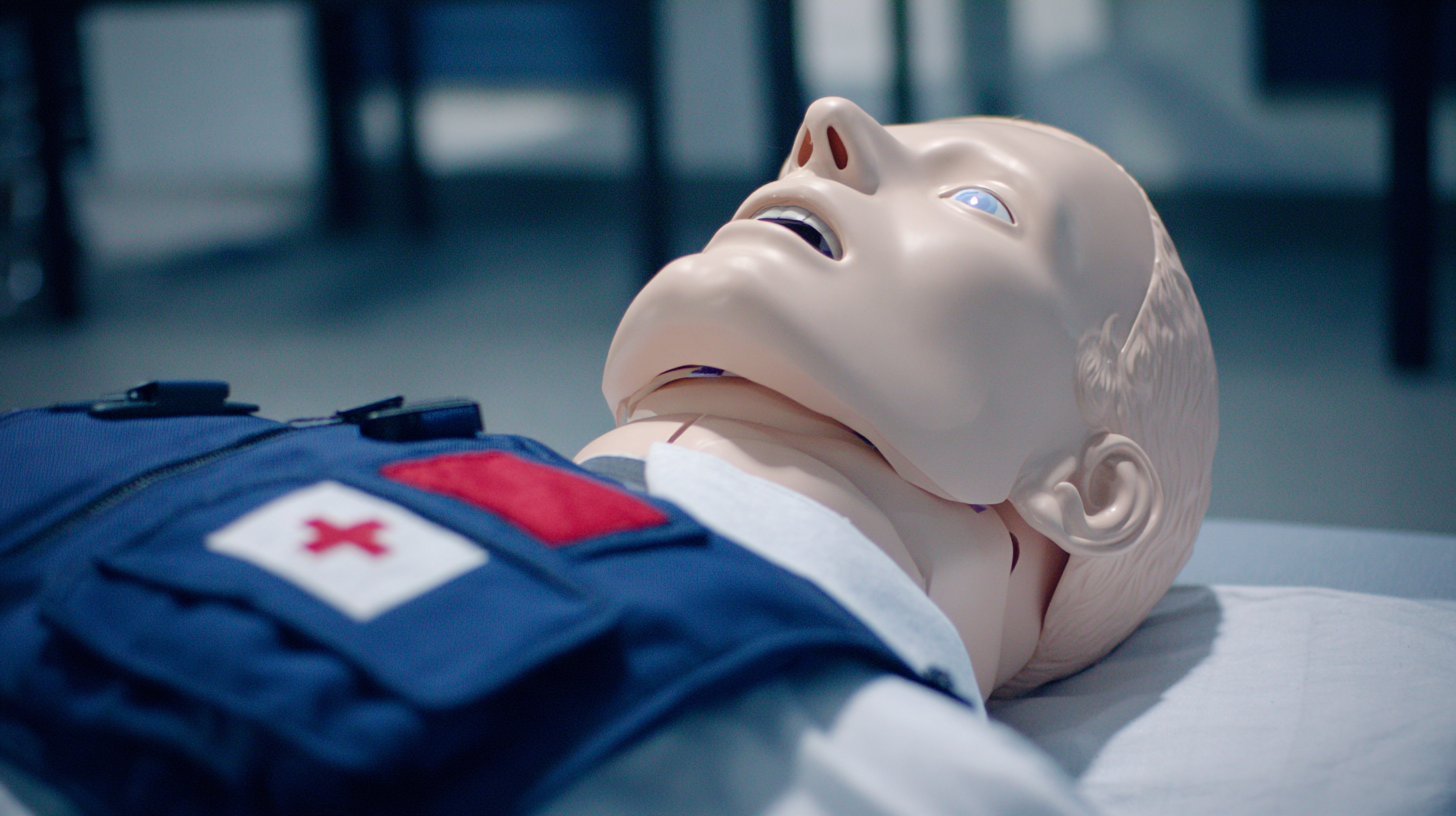When it comes to preparing for emergency healthcare scenarios, effective CPR training is crucial, and the choice of a Dummy for CPR can significantly impact the quality of instruction. According to the American Heart Association, immediate bystander CPR can double or triple a victim's chance of survival from cardiac arrest, highlighting the need for high-quality training tools. A report published by the National Institute of Health states that realistic training dummies enhance learning retention and increase the confidence of trainees.

In this context, selecting a reputable manufacturer for CPR dummies becomes imperative to ensure that the training experience is both effective and realistic. This blog will provide insights into how to choose a high-quality manufacturer for CPR training dummies, ensuring that healthcare professionals are well-equipped to save lives when it matters most.
High-quality CPR training dummies play a crucial role in equipping healthcare providers with the skills necessary for effective emergency response. According to a study by the American Heart Association, hands-on practice with realistic training devices significantly increases the retention of CPR skills. The report highlighted that learners who trained with advanced CPR dummies—designed to simulate the human anatomy—demonstrated a 30% higher proficiency in real-life application compared to those using standard models. The importance of lifelike features in dummies cannot be overstated; they facilitate a more authentic training experience, ensuring responders are well-prepared to act during emergencies.
When selecting a CPR dummy for training purposes, consider these essential tips: First, choose a model that offers feedback on compression depth and rate, as immediate performance indicators can enhance learning outcomes. Second, opt for a dummy that allows for both adult and pediatric scenarios, providing a broader training spectrum. Lastly, ensure the dummy is durable and easy to clean, as frequent use demands equipment that can withstand rigorous training sessions. By prioritizing high-quality training tools, emergency healthcare professionals can hone their skills effectively, ultimately improving patient survival rates in critical situations.
In the realm of emergency healthcare training, the importance of realistic simulations cannot be overstated. Advanced CPR training dummies today are equipped with features that enhance the training experience significantly. According to a report from the American Heart Association, effective CPR can double or triple a victim's chance of survival when performed immediately. Utilizing high-fidelity CPR dummies, which mimic real-life physiological responses and provide accurate feedback on compression depth and rate, can greatly improve the training outcomes for healthcare professionals.
These advanced dummies often include features such as wireless connectivity, allowing instructors to monitor the training in real-time and provide instant feedback. Furthermore, many of these mannequins are designed with anatomy that accurately represents the human body, enhancing the learner’s understanding of proper techniques. A recent study highlighted that students training with realistic dummies demonstrated a 30% increase in retention of CPR techniques compared to those using standard models. As the landscape of emergency medicine evolves, investing in state-of-the-art CPR training dummies becomes critical for preparing healthcare providers to respond effectively in high-pressure situations.
When it comes to CPR training, the choice of training tools can significantly affect the learning experience and outcomes. A comparative analysis of domestic versus international CPR training tools reveals some noteworthy differences. Domestic tools often prioritize ease of access and affordability, making them popular among community organizations. In contrast, international tools frequently emphasize advanced features, including realistic responsiveness and feedback mechanisms that enhance the training environment, providing users with immediate insights into their performance.
One effective tip for selecting the right CPR dummy is to consider the level of realism it offers. A more lifelike dummy can enhance the training experience by simulating real-life scenarios, which is critical in emergency healthcare situations. Additionally, ensure that the dummy allows for proper compression depth and rate, mirroring the guidelines set out by recognized health organizations. This practical experience is invaluable in building confidence and ensuring effective response during actual emergencies.
It’s also beneficial to incorporate technology into your training sessions. Many international training tools are now equipped with apps that track progress and provide feedback. This feature can help learners identify their strengths and weaknesses, facilitating a more tailored training approach. By choosing the right tools, participants can ensure a high level of preparedness for real-life emergency healthcare scenarios.
Quality CPR training equipment plays a crucial role in enhancing patient survival rates during emergency healthcare scenarios. When provided with realistic dummies that accurately simulate human anatomy and response, trainees can develop the muscle memory and confidence needed to perform CPR effectively. A high-quality CPR dummy allows for realistic practice of key techniques, such as chest compressions and rescue breaths, ensuring that healthcare providers can respond efficiently and accurately during actual emergencies.
Tip: Choose CPR training equipment that offers feedback mechanisms. Dummies with built-in feedback systems can inform trainees how effectively they’re performing chest compressions, providing immediate tips for improvement.
Moreover, training with the best dummies not only prepares healthcare professionals but also instills a sense of readiness in community lay responders. By using CPR dummies that replicate different age groups—from infants to adults—trainees learn to adapt their techniques based on the patient's specific needs.
Tip: Incorporate scenario-based training with different types of CPR dummies to simulate real-life emergencies. This practice can sharpen decision-making and quick response skills, ultimately contributing to improved patient outcomes in critical situations.

Recent innovations in CPR dummy design have significantly influenced the effectiveness of training programs in emergency healthcare scenarios. According to a report by MarketsandMarkets, the global CPR training market is projected to grow from $183 million in 2021 to $292 million by 2026, driven largely by advances in simulation technology. This surge is attributable to the increasing adoption of high-fidelity manikins that offer realistic feedback, such as rhythm and depth of compressions, mimicking real-life situations more closely than traditional models.
Moreover, the integration of smart technology into CPR dummies has revolutionized training methodologies. A study published in the Journal of Emergency Medical Services highlighted that trainees using advanced manikins experienced a 30% improvement in skill retention compared to those using basic dummies. Features such as Bluetooth connectivity, real-time performance analytics, and interactive training modules are making these tools indispensable for healthcare providers. As healthcare systems worldwide prioritize the importance of rapid and efficient CPR training, the demand for innovative and effective training tools continues to rise.

